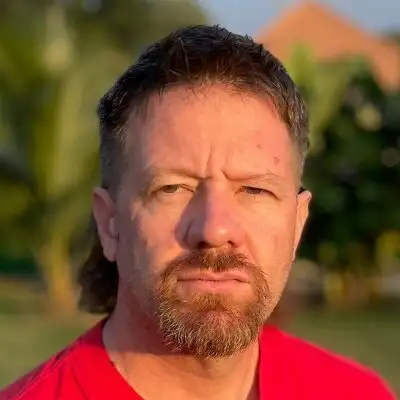
Micah Woods
I'm chief scientist at the Asian Turfgrass Center and director of the @paceturf information service. Some current projects include #OM246, #ClipVol, and #MLSN.
Appears in 192 Episodes
Top 10 posts of 2025 holiday extravaganza with Joe Gulotti
Joe Gulotti joined me to give the doublecut treatment to the top posts of 2025 on the ATC blog, plus a bit of holiday extravaganza.Blog post discussed is: https://www....

Nutrient recommendations when clippings are removed vs. returned
When grass clippings are returned to the turf, the quantity of nutrients required as fertilizer is decreased. In this episode I discuss how I handle the clippings retu...

Soil nutrient values in units of "years of use" rather than units of ppm
The #MLSN method for nutrient recommendations involves an MLSN value that the soil is not supposed to drop below. But what does this value mean, when converted from th...

How to make greens soft, and the opposite, making soft greens harder
This episode explains the steps I'd take to change greens from too hard (surface hardness and ball bounce, not hard as in difficulty) to just right. It follows that th...

Sand quantity as depth, and a suggestion to measure sand application rates
Expressing sand quantities as a depth makes communication easier. But to know the depth, you need to know how much sand was applied to begin with. I've been surprised ...

The right rate for N and sand topdressing: how I do it
I explain how I answered a couple questions about how much N and how much sand a particular grass might require. Specifically, I recommend adjusting N based on #ClipVo...

Usage rates for #ClipVol and #MLSN on golf courses in New York
The New York Golf Economic & Environmental Impact Report has interesting results for MLSN and ClipVol usage in New York. 58% of golf courses measure clipping volume an...

Fertilizer quotes from Piper, Oakley, and Arthur, and #MLSN
Piper and Oakley wrote that "there is nothing mysteriously beneficial in their formulas" and that mixed fertilizers are "extensively advertised" but "are not to be rec...

Turfgrass soil sample depth, and what a pesticide-free golf course looks like (photo gallery)
I explain why I recommend collecting soil nutrient samples to a 10 cm (4 inch depth). I also discuss the importance of repeated soil sampling in order to check the cha...

The Short Grammar book and summer internships with Jim Huntoon
My Short Grammar of Greenkeeping book is one of the required books for turf class at Horry-Georgetown Technical College in South Carolina. Professor Jim Huntoon joined...

Humidity, heat, mid-round lunches, saunas, and the ITRC with Janne Lehto
Janne Lehto from Hirsala Golf in Finland attended the 15th International Turfgrass Research Conference (ITRC) in Japan. We discussed the heat and humidity in Japan dur...

Layers in the rootzone and turf performance with John Forrest and Jeff Austen
John Forrest and Jeff Austen joined me from Western Australia to discuss layers in the rootzone, the educational system and apprenticeships, and sand.We looked at phot...

Gradation, particle size distribution, sand, and more sand with Adam Moeller
How do you compare sands to show to what degree one is finer or coarser than another? I've been trying to figure out an easy way to visualize this with comparison to r...

Regional MLSN and the soil nutrient levels producing good turf with John Emerson
John Emerson is an extension agent for the University of Delaware who has completed a statewide soil sampling project from good performing turf across the state. We ta...

The median particle size of sand used for putting green rootzones and topdressing
The D50 is a value that represents the median particle diameter in a sand. I calculated the D50 for 302 sands from around the world, and 15% of them are finer than the...

How to find the photosynthetically active radiation (PAR) anywhere
I explain that moving from full sun to tree shade reduced photosynthetically active radiation by about 80%. I show an app, and a PACE Turf document, that will allow yo...

The GvX, #OM246, and #MLSN with John Petrovsky
John Petrovsky is manager of USGA Green Section Education. He is also the host of the USGA Green Section podcast. We discussed a recent episode about GvX that had an e...

GP and ClipVol in the UK with Geoff Fenn
Geoff Fenn and I discussed the use of the turfgrass growth potential (GP) in the UK, optimum temperatures, the GvX, clipping volume, and more in this episode that star...

Green speed went down by 0.6 inches per hour
I discussed some green speed and green firmness data from measurements made at the Sky RKB Ladies Classic tournament, and I explained why the geometric mean rather tha...

Learning & remembering from a year of turf photos
In this episode I picked some of my favorite photos from 2024, and I remembered what I learned from them. From roots, layers, OM246, zoysia greens, and drought, to lou...
